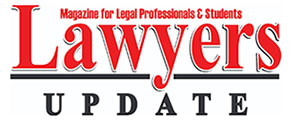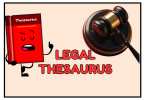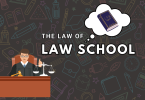Real Law School Personal Statements – Cut Out Extraneous Details
There are times in life when we happen upon a crossroads, a path split in two and we must choose a direction in which to go. These crossroads become meaningful when choosing one path over another changes your life. But there are other life changing paths that we do not choose. They are chosen for us. We are beckoned toward or pushed into them, and every day thereafter, we are inevitably bound to that dusty trail.
When I was fifteen, my cousin borrowed her half-sister’s yellow Ford to drive us to King’s Castle, an amusement park that boasted seven roller coasters, including her favorite, The Spiral Vortex, which featured six inversion loops, including a double corkscrew. It was my first time at the park, but my cousin’s family, my mom’s sister and her husband, his two kids, a boy and a girl, and her two kids, my actual cousins, both girls, were regulars.
We arrived just before open and after buying our tickets, immediately tore through the park until we got to the modest line of the enormous coaster, only seven people deep. We would get to ride on the first train of the day. My cousin was thrilled. 1 tried to absorb some of her excitement, but my fear was overwhelming. By the time they began to load us into the car, 1 was near tears.
“I think I’ll wait,” 1 told her. “I want to warm up on something first.” But she grabbed my arm, and 1 followed her into the third seat of the insect-like contraption and clicked the harness into place over my head. 1 gripped the red padded leather tightly to me and closed my eyes. We hadn’t even moved yet.
Slowly the train pulled out and after a sharp turn, began its ascent. We could see the entire park from our seats. The train clicked leisurely up the hill, betraying the onslaught it was about to put forth. The silence when we reached the pinnacle was near-deafening. As the coaster roared to its maximum speed 1 lost function in every part of my body. 1 tried to inhale, but the pressure was profound.
We looped through the first inversion and then the second in quick succession. I hadn’t counted. 1 was told this information later. It was the third of the Vortex corkscrews that got it. 1 could only have said it was somewhere between the first and fiftieth that locked us in.
We rolled up the next loop on the track and then it simply stopped in place. There was no sputter or gurgle. No grunt or clack. The train rolled upward and then stopped exactly where it decided to stop. My reaction wasn’t immediate. Like I said, my emotions were as trapped deep down under my skin as I was now trapped upside-down on this roller coaster. My neck was elongated, gravity pressing my head toward the ground that was fifty-feet below, another fact I read days later in a newspaper article that recounted that day. I would have guessed a much higher number. I could feel my blood gathering in the crown of my head. Time all kind of came together but at some point, someone shouted, “I’m slipping!” But her voice was muddled by the voices of other passengers calling out for release, including my own. At minute seven, which I also learned later, another voice joined hers in raising the alarm. “Help!” those two voices yelled. “She’s slipping!”
The voices were several rows behind me. My own mobility was limited.
But sometime later I learned that the two people in front and the two people behind the twenty-two-year-old had tried to form some kind of net of arms to hold her up as her red harness failed and clicked out of position. I don’t remember her face from the line or from when we boarded. I only remember it the way everyone else does, peering out with a broad pretty smile from the newspaper article that immortalized her.
When she fell at minute 7, second 43, according to the paper, I closed my eyes and heard her screaming. I could hear the sobs of her friend. The rest of the eighteen minutes slugged by until at last the car seamlessly slid down the corkscrew and flew unhindered across seven more. Finally we landed back at the beginning and the Spiral Vortex closed down for two months as her parents tried to make sense of the death of their child.
We were each ushered into the care of a team of EMS personnel and checked for injuries. We were asked to sign something that a lawyer who’d been riding at the front, suggested none of us sign without having a lawyer look it over. We later learned that our tickets waived much of King’s Castle’s responsibility. But in the end there was a settlement that each of the thirteen rider’s split after a trial that awarded the victim’s parent’s a little more money, but no new child.
I finished high school and college, certain that I would one day apply to law school. I would make sure that those who needed accountability would be held accountable. There are times when we are forced down paths we never wanted, or never needed to go down. Sometimes those paths are unavoidable. But one more test ride around the Spiral Vortex might have saved a life that day. Attention to the safety harness and an assurance of its viability might have kept that girl alive.
I believe in the laws of our nation in keeping each of us safe and secure.
I believe in the future of our nation and the promise it holds, in spite of the eighteen minutes I spent upside down, fifty-feet up, held in place a by a harness that only just happened to work.
JD MISSION REVIEW
Overall Lesson
The details of horrific events can often be spared to make room for adequate, relevant reflection.
First Impression
The first paragraph of the essay sounds a little cliche to me and does not really say anything. She can strike it altogether.
Strengths
Wow-what a horrifying story. The candidate’s writing is strong. She delivers an effective narrative (effective in the sense that I needed to stand up and walk around to shake off my emotions after reading it). Her “take-away”-for lack of a more sensitive word-from her tragic experience at the amusement park is plausible and touching: she wants to be a lawyer. I am not surprised.
Weaknesses
The beginning of the essay does not really prepare the reader for what happens in the end. I initially think I am about to read about a young girl’s first roller coaster ride, and I am not ready for what the true story turns out to be instead. She does not need to tell us up front that someone dies, but she could bring readers into the action sooner and cut some of the extraneous details, such as “my cousin’s family, my mom’s sister and her husband, his two kids, a boy and a girl, and her two kids, my actual cousins, both girls”-we do not need to know all of that. We also do not need to be told that her cousin borrowed her halfsister’s car. And we do not need to hear quite so much about what happened leading up to their ride on the roller coaster.
In addition, language like this is too forced: “The train clicked leisurely up the hill, betraying the onslaught it was about to put forth.” The candidate needs to tell her story in a voice that sounds more genuine. The truth is, when chronicling a tragic event like this one, you should use language sparsely. The event speaks for itself; you do not need to add drama by writing flowery sentences. Just describe what happened.
Finally, this compelling and heartbreaking story no doubt had an enormous impact on the candidate’s life, and she could strengthen the essay by devoting more space to discussing what that impact was rather than simply describing the details of the accident. Despite her gripping account of the tragic incident, the essay would be more effective if the candidate described how it fueled her interest in law. Was she angry about the outcome of the case or about the amusement park’s attempt to avoid liability? She implies that something in this vein was upsetting to her, but she does not tell us what exactly that was. By that point in the essay, I am eager to read her reflections on that aspect of the event.
Final Assessment
To be more balanced, this essay needs some revision at the beginning to eliminate the crossroads-related cliches and some elaboration at the end to more clearly explain the accident’s role in the candidate’s decision to attend law school. With this work, the essay could become as powerful as the story it tells.








